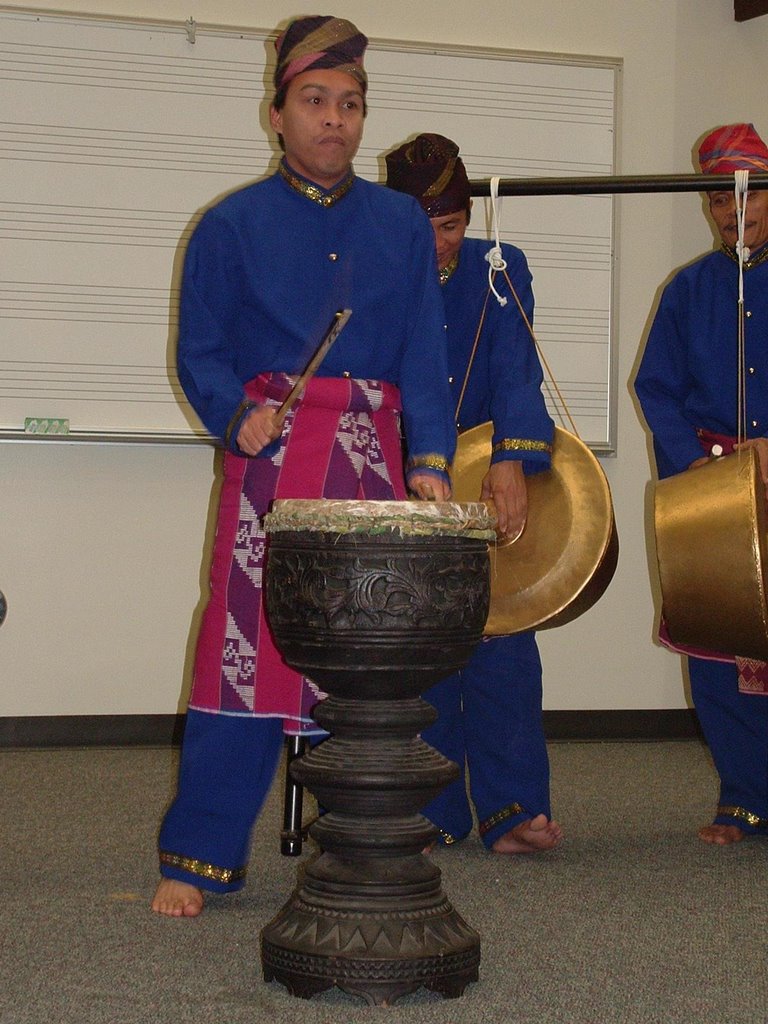the Darangen is an ancient epic song that encompasses a wealth of knowledge about the Maranao people who live in the Lake Lanao region of Mindanao. This southernmost island of the Philippine archipelago is the traditional homeland of the Maranao, one of the country’s three main Muslim groups.
The darangen is an epic chant associated with the Maranao people, with the core area of habitation being the province of Lanao del Sur in the island of Mindanao. Although other variations exist among the Maranao ethnic communities living in other areas, among the Maguindanao ethnic group, and Manobo groups to the Pacific Coast. The one in Lanao del Sur is considered the most definitive.
Comprising 17 cycles and a total of 72,000 lines, the Darangen celebrates episodes from Maranao history and the tribulations of mythical heroes. In addition to offering compelling narrative content, the epic explores the underlying themes of life and death, courtship, politics, love and aesthetics through symbol, metaphor, irony and satire.
The Darangen also encodes customary law, standards of social and ethical behaviour, notions of aesthetic beauty, and social values specific to the Maranao. To this day, elders refer to this time-honored text in the administration of customary law.
Meaning literally “to narrate in song” in the Maranao language, the Darangen existed before the arrival of Islam in the Philippines in the fourteenth century. Being part of a wider epic culture that is connected to early Sanskrit practices and extends through most of Mindanao, it offers insight into pre-Islamic cultural traditions of the Maranao people.
Though the Darangen has been largely transmitted orally, parts of the epic have been recorded in manuscripts using an ancient Arabic-based writing system. Being cherished as heirlooms by certain Maranao families, these manuscripts are highly valued for their antiquity and prestige value.
Specialised performers of either sex sing the Darangen during wedding celebrations that typically last several nights. Performers must possess a prodigious memory, improvisational skills, poetic imagination, knowledge of customary law and genealogy, a flawless and elegant vocal technique, and the ability to engage an audience during long hours of performance. Music and dance sometimes accompany the chanting.
Nowadays, the Darangen is infrequently performed owing in part to its rich vocabulary and archaic linguistic forms that can only be understood by practitioners, elders and scholars. Indeed, the growing tendency to embrace mainstream Filipino lifestyles represents a serious threat to the survival of this ancient epic.
It is a pre-Islamic form of primarily oral literature, presently existing in an Islamic context. Implications contained in the epic point to influences reaching as far west as India. The epic is the culmination of all these influences and the core culture of the Maranao.
On November 25, 2005 the Maranao epic chant, the Darangen, was also proclaimed as another Philippine masterpiece of oral and intangible heritage of humanity.
UNESCO defines oral and intangible heritage as: "The totality of tradition-based creations of a cultural community, expressed by a group of individuals and recognized as reflecting the expectations of a community in so far as they reflect its cultural and social identity; its standards and values are transmitted orally, by imitation or by other means.
SIGNIFICANCE
An analysis of the role of the darangen in Maranao society will offer valuable clues into how the Maranao people relied on oral traditions to provide societal norms and solutions to certain economic, cultural and historical issues in their society. The darangen remains an important source of information regarding the Maranao value system, social etiquette, mythology and marriage customs and traditions. Ancient Maranao society was highly structured, and prescribed a strict code of behavior. In addition, the darangen explores the relationship between the earth-bound society and the more mythical sky kingdoms. More importantly, the darangen contains the Maranao theories of governance and strategies for war and combat. The epic is a story of how communities struggled to maintain peace and defended their territories from invaders. It is inevitable that the epic would be filled with advice for the warrior, such as how to handle a sword, how to declare war, and enter into treaties. (jtperalta)
REFERENCE:
https://www.youtube.com/watch?v=re33SdfjU0Q
http://www.ncca.gov.ph/about-culture-and-arts/culture-profile/culture-profile-intangible-
heritage.php
For a drama presentation of the Darangen
https://www.youtube.com/watch?v=oN6Wtm28pEI
For the story of Darangen epic check the link
http://fil.wikipilipinas.org/index.php/Darangen
http://www.unesco.org/culture/intangible-heritage/32apa_uk.htm












